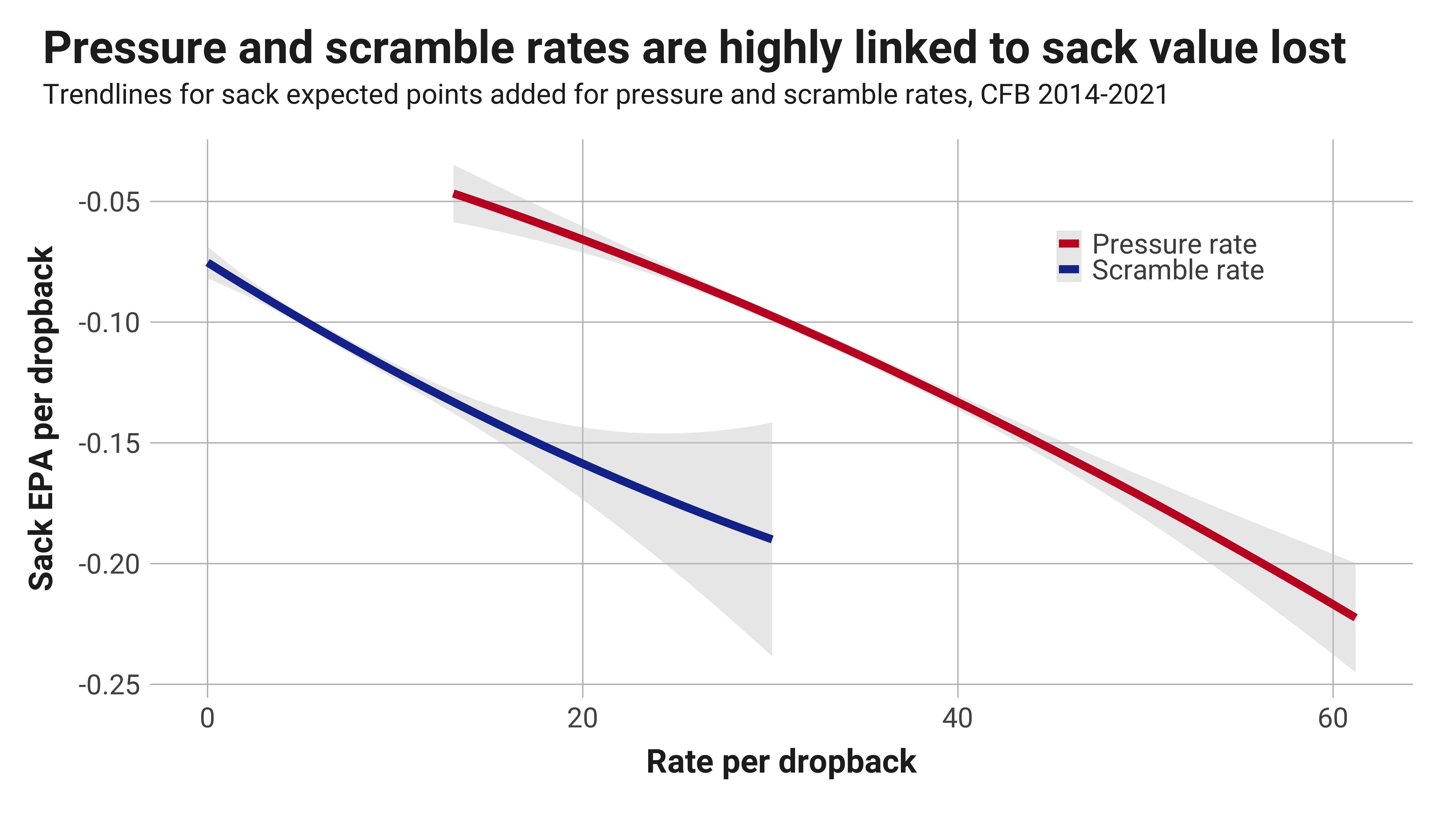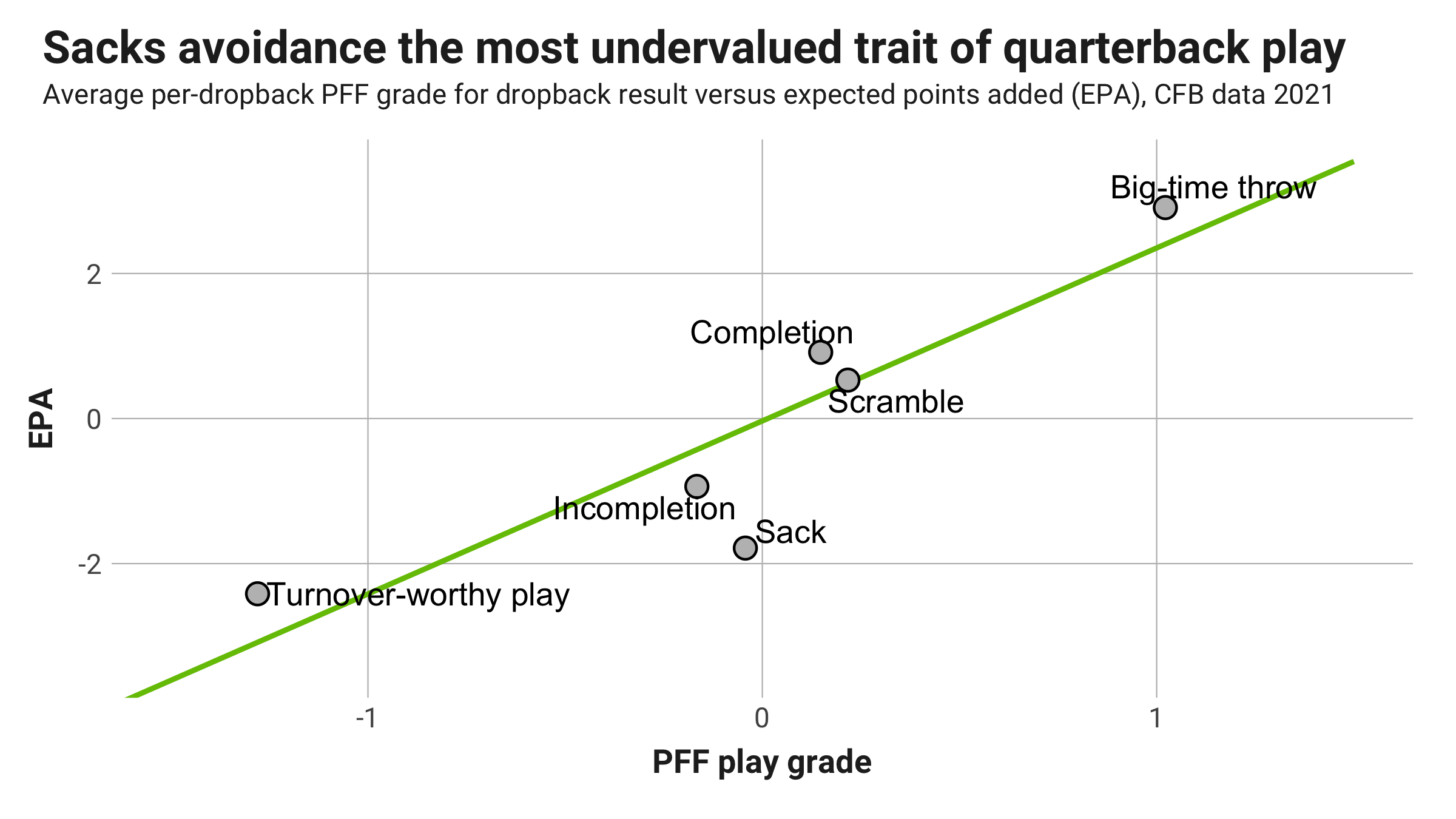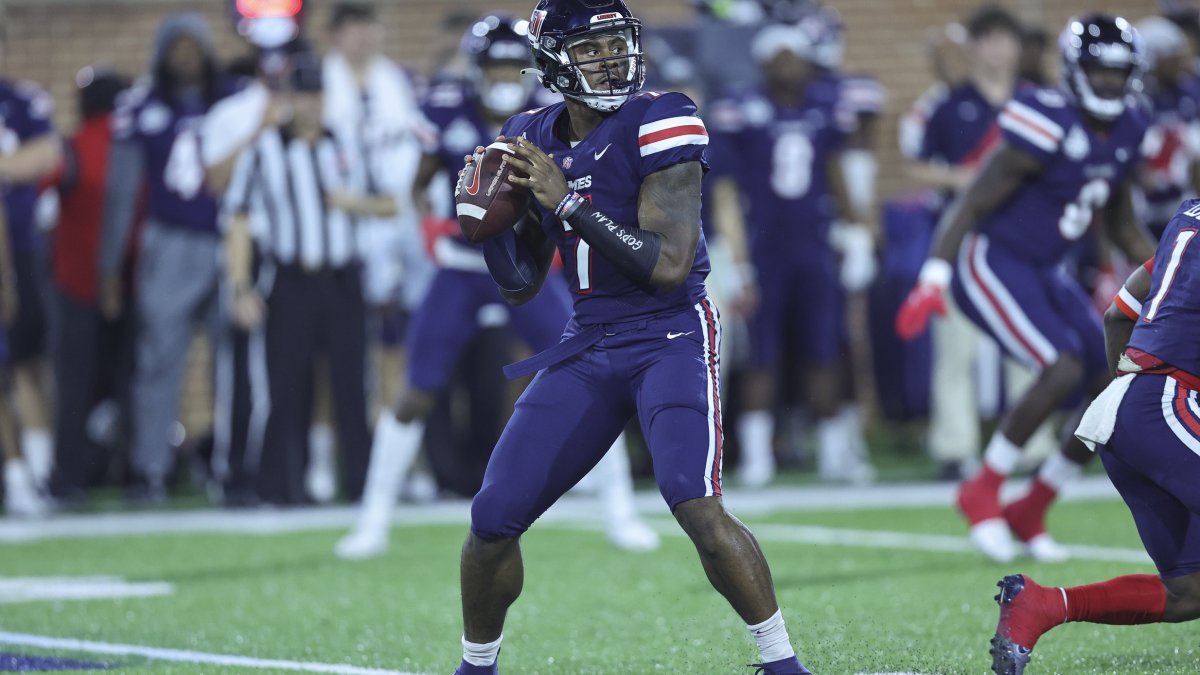Last week, I wrote about what to look for in NFL quarterback prospects, focusing on the traits most often associated with those who ended up being successful at the next level. That article looked specifically at outperformance under pressure, which appears to be a key to success despite pressured performance being less stable than that from a clean pocket.
Click here for more PFF tools:
Draft Guide & Big Board | Mock Draft Simulator
Dynasty Rankings & Projections | Free Agent Rankings | 2022 QB Annual
Player Grades
In this article, I’m going to focus on two additional traits that consistently show up to a greater degree in successful quarterbacks. I identified these traits by gathering the data that PFF collected since 2014 on every college quarterback and looking specifically at the relative performance of successful and unsuccessful quarterbacks in dozens of metrics.
The two metrics that stand out more than any others in regards to successful quarterback prospects are generating value through scrambles and sack avoidance.
Below, I’ll give some rationale for why those metrics matter so much in the modern NFL and also chart the 2021 and 2022 quarterback classes to see who is most likely to go on to NFL success in the NFL.
METHODOLOGY
Specifically, I measured scramble value in terms of expected points added (EPA) on scrambles per dropback. Expected points added is the best metric for quantifying the exact value added on a play in the most relevant denomination: points.
All scrambles are not built the same, as a three-yard scramble on first-and-10 generates negative EPA while the same distance gained on third-and-3 would translate to significant points gained as the drive continues. Effective scrambling isn’t only about how often quarterbacks tuck the ball and run, but whether they’re improving their team’s chances of winning by scrambling at the right moments.
For sack avoidance, I created a metric that accounts for pressure rate and scramble rate — the two major drivers of sack value lost.

Quarterbacks who face higher pressure rates, and those who scramble more often, generally take more sacks. So my measure for sack value lost versus expectation uses those two metrics to generate an expected sack value lost then compares each quarterback’s actual number to that expectation. As mentioned above, scrambling is a major positive for quarterback success and so are other metrics of mobility. For that reason, I felt it was important to net out the downside of taking sacks for scrambles in the equation.
WHY SACK AVOIDANCE IS SO IMPORTANT
The case for adding value scrambling is intuitive: adding points any way possible is a good thing. Nonetheless, for most observers, preventing the loss of points with sack avoidance isn’t as linked to quarterback value. That’s because the division of blame between quarterbacks and their pass blockers is murky in addition to a misunderstanding of how incredibly costly sacks are in aggregate.
The plot below shows the average play-level grades for different results of quarterback dropbacks against their corresponding average EPA values during the 2021 CFB season. The play-level PFF grades range from -2-to-2, and most dropbacks are graded as zero, or neutral, for quarterbacks. Big-time throws and turnover-worthy plays register at least a negative or position one, with relatively few places in the 1.5-to-2 range in either direction.

The green trendline between play-level PFF passing grades and EPA conveniently goes through the intersection of zeros and has a fairly linear path in either direction. The values for different play types don’t align perfectly with the trendline, which makes sense if you assume the quarterback isn’t fully responsible for the results generated by 11 players.
Quarterback scrambles are on the trendline, meaning we give them almost all credit for the play. Standard incompletions and completions are not fully credited to quarterbacks. Big-time throws are in the same category, and turnover-worthy plays are weighed more heavily against quarterbacks than their actual EPA effects.
While turnover-worthy plays might grade quarterbacks too harshly, sacks are an outlier in the other direction. Sacks are highly negative plays, as average EPA values are close to that of a turnover-worthy play, but the average passing grade for quarterbacks on sacks is only slightly negative. In fact, quarterbacks are graded more harshly on average incompletions than sacks despite the latter being twice as costly.
It’s understandable that the blame for a bad throw would be placed on the quarterback more than that for sacks, but the proportion of blame built into the grading system implies that more than 90% of the value blame goes to other players, which contrasts what we’ve learned about the quarterback's high degree of responsibility on sacks.
This grade-versus-EPA analysis wasn’t meant as a critique of our grading as much as a concrete illustration of something similar that is likely happening with quarterback evaluation generally. Sack responsibilities are harder to parse, and when in doubt, giving the quarterback the benefit of doubt is logical. Plus, sacks that are avoided with purposeful incompletions or throw-aways don’t intuitively register as “good” plays even if they’re better than the alternative of holding the ball and taking a sack. The underappreciation of sack avoidance isn’t only a prospect evaluation issue, but a general misunderstanding of how much a quarterback controls in addition to sacks' dramatic negative impact.

SUCCESSFUL HISTORICAL PROSPECTS
Exclusive content for premium subscribers

WANT TO KEEP READING?
Dominate Fantasy Football & Betting with AI-Powered Data & Tools Trusted By All 32 Teams
Already have a subscription? Log in




 © 2025 PFF - all rights reserved.
© 2025 PFF - all rights reserved.